Music Theory Basics for Beginners: Guitar & Piano Guide
Category: Music Theory
Unlock the Foundations of Music Theory for Your Guitar & Piano Journey
Starting out as a beginner musician can feel overwhelming—especially when you’re confronted with a flood of complex music theory terms and concepts. Whether you picked up a guitar or piano to bring your musical ideas to life or simply want to understand music on a deeper level, mastering the basics of music theory is essential. You likely searched for "music theory basics for beginners" to find a clear, straightforward guide that not only explains theory simply but also connects it directly to practical playing on your instrument. This post is tailored to you: a beginner eager to grasp how music works so you can confidently play, compose, and enjoy your musical journey.
Unlike dense textbooks or overly technical tutorials, this guide breaks down key music theory principles in an accessible way, focusing especially on guitar and piano applications. You’ll discover how to read notes, understand scales, build chords, and internalize rhythm—all with practical playing tips. By the end, you’ll have a solid foundation to confidently explore and create music, whether strumming your guitar or tinkling the piano keys. Dive in to turn abstract theory into musical expression and make your learning efficient, enjoyable, and rewarding.
- Unlock the Foundations of Music Theory for Your Guitar & Piano Journey
- Understanding Musical Notes and the Musical Alphabet
- Rhythm Basics: Time Signatures and Note Values
- Scales and Their Importance: Major and Minor Scales
- Intervals: Building Blocks of Melody and Harmony
- Chords and Chord Progressions: From Triads to More
- Key Signatures and the Circle of Fifths: Unlocking Tonal Relationships and Transposing
- Reading Music: Staff, Clefs, and Notation
- Applying Theory to Guitar: Fretboard Layout and Common Guitar Shapes
- Applying Theory to Piano: Keyboard Layout and Hand Positions
- Ear Training and Developing Musical Awareness: Recognizing Intervals, Chords, and Progressions
Understanding Musical Notes and the Musical Alphabet
Before diving into chords and scales, it’s crucial to get comfortable with the musical alphabet—the foundation of all music theory. The musical alphabet consists of just seven note names: A, B, C, D, E, F, and G. After G, the sequence repeats in a loop. These notes form the basis of melodies and harmonies you’ll play on both guitar and piano.
The Musical Alphabet and the Staff
Music is traditionally written on a staff, which has five horizontal lines and four spaces. Each line or space corresponds to a specific note name, depending on the clef used (treble or bass). For beginners, the treble clef is most relevant, especially for guitar and right-hand piano parts. On the treble clef staff:
- The lines, from bottom to top, represent the notes E, G, B, D, F.
- The spaces represent F, A, C, E.
Knowing these note names helps you translate written music into sounds on your instrument.
Translating Notes to Piano Keys and Guitar Frets
-
Piano: Each white key on the piano corresponds to one of the seven natural notes (A through G), arranged in repeating patterns across the keyboard. The black keys represent sharps (#) and flats (b), which are the notes in between the natural notes.
-
Guitar: The guitar fretboard mirrors these notes along strings tuned to E, A, D, G, B, E (from lowest to highest). Each fret you press raises the pitch by one half-step, moving through the musical alphabet with sharps and flats similarly to the piano.
By understanding the musical alphabet, and how notes are mapped to the staff, piano keys, and guitar frets, you set yourself up for powerful, intuitive learning as you begin reading music, playing melodies, and building chords on either instrument. This core knowledge makes the journey into scales, chords, and rhythm much smoother and more enjoyable.

Image courtesy of Pixabay
Rhythm Basics: Time Signatures and Note Values
Understanding rhythm is just as important as knowing your notes when learning music theory for guitar and piano. Rhythm organizes music in time, guiding when and how long to play each note or chord. At its core, rhythm relies on beats and measures (or bars), framed by time signatures that tell you how music is structured. Mastering these basics allows you to count rhythms accurately and develop tight timing whether you’re strumming chords on your guitar or playing melodies on the piano.
Beats and Measures: The Building Blocks of Rhythm
A beat is the basic unit of time in music, like the steady pulse you might tap your foot to. Beats are grouped into measures, which act as rhythmic containers marked off by bar lines on sheet music. Measures help musicians keep track of where they are in a song and organize rhythms into manageable segments.
Common Time Signatures Explained
A time signature appears as two stacked numbers at the beginning of a piece of music, right after the clef. The top number tells you how many beats are in each measure, while the bottom number indicates the note value that represents one beat.
Here are some common time signatures encountered in beginner guitar and piano music:
| Time Signature | Meaning | Counting Example |
|---|---|---|
| 4/4 (Common Time) | 4 beats per measure; quarter note = 1 beat | "1, 2, 3, 4" |
| 3/4 (Waltz time) | 3 beats per measure; quarter note = 1 beat | "1, 2, 3" |
| 2/4 | 2 beats per measure; quarter note = 1 beat | "1, 2" |
| 6/8 | 6 beats per measure; eighth note = 1 beat | "1 & 2 & 3 &" (grouped in two) |
Familiarity with these signatures helps you feel the pulse and internalize the rhythm as you play.
Note Values: How Long to Play Each Sound
Notes come in different values that indicate how long they should be held relative to the beat. The most common note values for beginners include:
- Whole note (𝅝): lasts 4 beats in 4/4 time
- Half note (𝅗𝅥): lasts 2 beats
- Quarter note (𝅘𝅥): lasts 1 beat
- Eighth note (𝅘𝅥𝅮): lasts half a beat
- Sixteenth note (𝅘𝅥𝅯): lasts a quarter of a beat
Understanding note values combined with time signatures allows you to count rhythms accurately and play with consistent timing.
Counting Rhythms on Guitar and Piano
To count rhythms effectively when practicing:
- Identify the time signature at the start of the piece.
- Feel the beat by tapping your foot or nodding your head steadily.
- Count out loud or silently using numbers that correspond to the beats (e.g., "1, 2, 3, 4" for 4/4).
- Break down complex rhythms by subdividing beats into smaller units (e.g., "1 & 2 &" for eighth notes).
- Practice slowly with a metronome to develop steady timing before speeding up.
For both guitar and piano, internalizing rhythm through counting ensures your playing remains tight and musical, no matter the tempo or style. Rhythm is the heartbeat of music—mastering it turns your notes into expressive, polished performances.
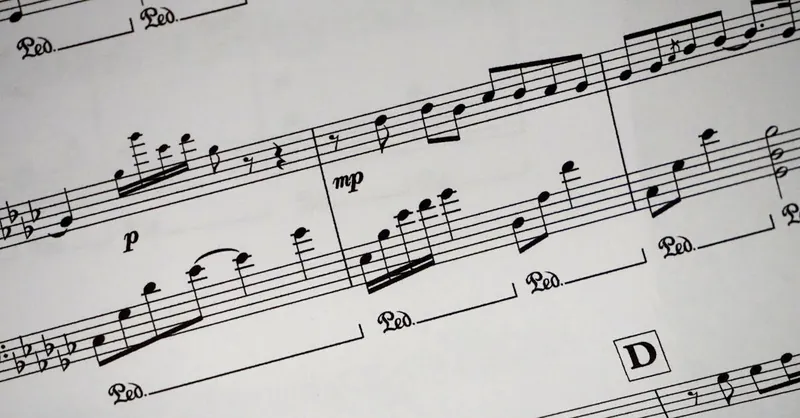
Image courtesy of Pixabay
Scales and Their Importance: Major and Minor Scales
At the heart of music theory lie scales, which are organized sequences of notes arranged in ascending or descending order. Scales are fundamental building blocks that help musicians understand melody and harmony, guiding what notes sound good together and shaping the overall mood of a piece. Whether you are playing guitar or piano, mastering scales is crucial because they provide the foundation for improvisation, songwriting, and chord construction.
What Are Scales?
A scale is essentially a set of notes ordered by pitch, following a specific pattern of intervals (the distances between notes). Think of a scale as a musical ladder where each step represents the next note in the sequence. By learning scales, you gain insight into which notes naturally belong together in a key, and how melodies and harmonies fit within that framework.
Constructing the Major Scale
The major scale is one of the most important and widely used scales in Western music. It has a happy and bright sound and forms the basis of many songs. The major scale consists of seven notes plus the octave (the eighth note, which repeats the first at a higher pitch). Its construction follows a specific pattern of whole steps (2 semitones) and half steps (1 semitone):
Major Scale Pattern:
Whole, Whole, Half, Whole, Whole, Whole, Half
For example, the C major scale on piano or guitar includes the notes:
C – D – E – F – G – A – B – C
To build it on any root note, simply follow the pattern of intervals above.
Constructing the Minor Scale
The natural minor scale has a more somber, mellow tone and is also essential for musicians. It differs from the major scale by having lowered third, sixth, and seventh notes. Its interval pattern is:
Natural Minor Scale Pattern:
Whole, Half, Whole, Whole, Half, Whole, Whole
For example, the A natural minor scale contains the notes:
A – B – C – D – E – F – G – A
Knowing both major and minor scales allows you to navigate different emotional landscapes in your music, whether you're strumming on the guitar or playing piano melodies.
Why Major and Minor Scales Matter in Melody and Harmony
- Melody: Scales provide the palette of notes you use to create melodies. By choosing notes from a major or minor scale, your melodies will naturally have a coherent sound that fits within a musical key.
- Harmony: Chords are constructed by stacking specific notes from scales. Understanding scales helps you build harmonious chords and progressions that work together.
- Improvisation & Composition: Scales serve as guides when creating spontaneous solos or composing songs, enabling you to choose notes that fit stylistically and emotionally.
By practicing the major and minor scales on your guitar or piano regularly, you strengthen your fretboard or keyboard knowledge, develop finger dexterity, and internalize the sound of musical keys. This makes playing and composing music more intuitive and enjoyable from the start.

Image courtesy of Tima Miroshnichenko
Intervals: Building Blocks of Melody and Harmony
At the core of music theory lies the concept of intervals, which are simply the distances between two notes. Intervals are fundamental because they shape every melody you play and every harmony you hear, whether on guitar or piano. Understanding intervals helps you recognize the flavor of music, build chords, and create interesting melodic lines that resonate with emotional depth.
What Are Intervals?
An interval measures the pitch difference between two notes, expressed in steps or half-steps (semitones). On piano, these correspond to the physical distance between keys, and on guitar, the number of frets separating two notes on the same or different strings. Each interval has a distinct sound character — from the bright, stable perfect fifth to the tense, mysterious tritone.
How to Recognize Intervals by Ear
Training your ear to identify intervals is a vital skill for musicians. Here are tips to improve interval recognition:
- Associate intervals with familiar songs. For example:
- Major second (2 semitones): “Happy Birthday” start
- Perfect fourth (5 semitones): “Here Comes the Bride”
- Perfect fifth (7 semitones): “Star Wars” opening
-
Octave (12 semitones): the first two notes of “Somewhere Over the Rainbow”
-
Sing intervals regularly. Starting from a reference note, sing second, third, fourth, and other intervals to internalize their sounds.
-
Practice with your instrument. Play intervals on the guitar fretboard or piano keyboard and listen closely to how their qualities differ.
Intervals on Guitar and Piano
- Guitar: Intervals are found by counting frets. For example, moving 2 frets up on the same string equals a major second. Understanding intervals on strings and across strings aids in fingering chords and improvisation.
- Piano: Intervals are counted by moving from one key to another, including black keys. The pattern of intervals is visual and tangible, making piano an excellent tool for internalizing interval relationships.
Why Intervals Matter in Music Structure
Intervals form the building blocks of scales, chords, and melodies, giving music its structure and emotional effect. Recognizing intervals helps you:
- Build chords: All chords are stacks of intervals (like thirds or fifths).
- Create melodies: Melodies move through different intervals, shaping the tune’s character.
- Analyze music: Knowing intervals lets you understand why certain notes work together harmoniously or create tension.
- Improve improvisation: When soloing on guitar or piano, using interval knowledge enables targeted note choice that fits the song’s mood.
Mastering intervals boosts your musical intuition and technical skills, enhancing how you perceive and produce music on both guitar and piano. By practicing interval identification and application frequently, you’ll advance your ability to create expressive melodies and rich harmonies with confidence.

Image courtesy of Pixabay
Chords and Chord Progressions: From Triads to More
Building on your understanding of notes, scales, and intervals, the next fundamental step in music theory for guitar and piano is learning about chords and how they form the harmonic backbone of most music. A chord is simply a combination of two or more notes played together, creating a richer sound that supports melodies and shapes a song's mood. By knowing how chords are constructed from scales and discovering common chord progressions, you’ll unlock new possibilities for playing, composing, and improvising on both guitar and piano.
How Chords Are Built from Scales
Chords are typically derived by stacking notes from a given scale at specific intervals, most often using thirds (intervals spanning two notes in the scale). For example, the simplest and most common chords—called triads—comprise three notes:
- Root: The starting note or "home" note of the chord.
- Third: The note a third interval above the root (determines whether the chord sounds major or minor).
- Fifth: The note a fifth interval above the root (adds stability).
For instance, in the C major scale (C, D, E, F, G, A, B), a C major triad consists of C (root), E (major third), and G (perfect fifth). On guitar and piano, learning where these notes fall enables you to quickly build and recognize chords.
Beyond Triads: Seventh Chords and More
To add color and complexity to music, musicians often use seventh chords, which include a fourth note stacked on top of the triad — the seventh scale degree relative to the root. Seventh chords create richer harmonies and are very common in many genres:
- Major seventh (maj7): Root + major third + perfect fifth + major seventh
- Dominant seventh (7): Root + major third + perfect fifth + minor seventh
- Minor seventh (m7): Root + minor third + perfect fifth + minor seventh
Experimenting with these chords on your guitar or piano will expand your harmonic vocabulary and enhance your playing style.
Common Chord Progressions for Guitar and Piano Beginners
Understanding popular chord progressions helps you recognize song structures and improves your ability to play along with others or write your own music. Here are some beginner-friendly progressions based on the major scale:
| Progression Name | Chords (Key of C) | Description |
|---|---|---|
| I-IV-V | C – F – G | The most common progression in many genres |
| I-V-vi-IV | C – G – Am – F | Known as the “pop progression,” very versatile |
| ii-V-I | Dm – G – C | Fundamental jazz and blues progression |
| I-vi-IV-V | C – Am – F – G | Classic 50s progression, upbeat and catchy |
Practicing these chord sequences on both guitar and piano will help you develop smooth chord changes and deepen your understanding of how harmony drives music forward. Start by learning the shapes and fingerings for each chord, then gradually explore changing between them in rhythm to popular songs.
By mastering how chords are built from scales and exploring common chord progressions, you create a strong foundation for both accompanying yourself and crafting original music. Whether strumming your guitar or pressing keys on the piano, chords will be your most powerful tool for expression and composition.
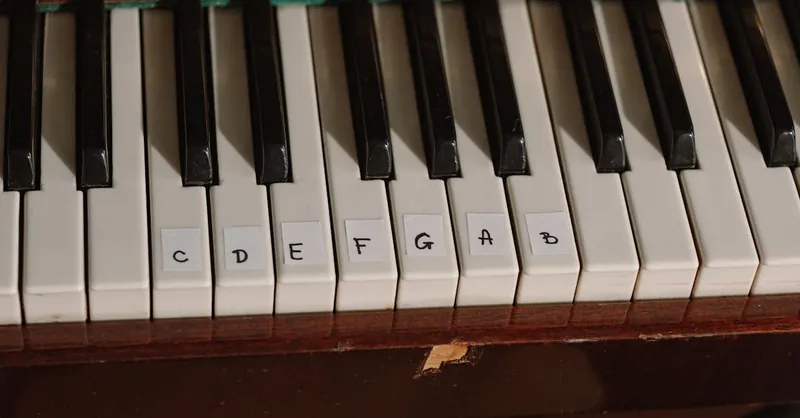
Image courtesy of cottonbro studio
Key Signatures and the Circle of Fifths: Unlocking Tonal Relationships and Transposing
When learning music theory for guitar and piano, understanding key signatures is essential to quickly identify the tonal center of a piece and which notes or chords naturally belong in the key. A key signature tells you which notes are sharpened (#) or flattened (b) throughout a composition, removing the need to write accidentals repeatedly. This knowledge not only simplifies reading sheet music but also empowers you to transpose songs efficiently and understand the relationships between different keys.
What Are Key Signatures?
A key signature is a set of sharps or flats placed at the beginning of a staff that indicates the home key of the music. It helps you determine the scale on which the piece is based. For example:
- The key of C major has no sharps or flats.
- The key of G major has one sharp (F#).
- The key of F major has one flat (Bb).
When you know the key signature, you immediately understand which notes will be consistently raised or lowered, making it easier to anticipate chord tones and scale patterns on your guitar or piano.
Using the Circle of Fifths to Understand Key Signatures and Relationships
The Circle of Fifths is a powerful visual tool that illustrates the relationships between all 12 major keys and their corresponding key signatures in a circular layout. Each move clockwise on the circle represents a jump of a perfect fifth interval, adding one sharp to the key signature. Conversely, moving counterclockwise adds flats.
Here’s how the Circle of Fifths benefits beginner guitarists and pianists:
- Memorizing key signatures: The circle organizes keys in a logical order, making it easier to remember which keys have sharps or flats.
- Understanding key relationships: Keys next to each other on the circle are closely related and share many common chords, which is useful when modulating or changing keys in a song.
- Facilitating transposition: If you want to change a song's key to better fit your vocal range or instrument, the circle shows you the new key’s signature and helps you shift chords or scale patterns accordingly.
- Chord progression insights: Common chord progressions often move around adjacent keys on the circle, aiding your composition and improvisation skills.
Practical Tips for Guitar and Piano
- On guitar, use the Circle of Fifths to find alternate key positions on the fretboard and explore barre chord shapes in new keys.
- On piano, visualize the sharps and flats of each key signature and adjust your fingerings when playing scales or chords in different keys.
- When transposing a song, identify the original key via its key signature, then move clockwise or counterclockwise on the circle by the desired number of steps to find the new key.
By mastering key signatures with the Circle of Fifths, you gain a deeper understanding of how music is structured across all keys, enhancing your sight-reading, composition, and performance skills on both guitar and piano. This knowledge bridges the gap between theory and practice, making your musical journey more fluid and versatile.
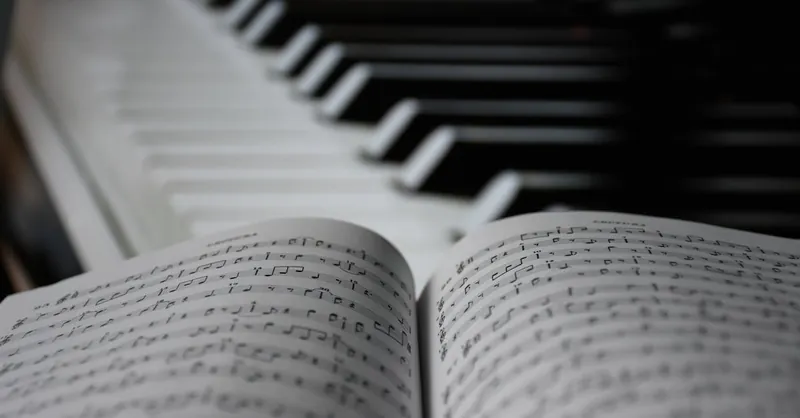
Image courtesy of Sebastian Rivera
Reading Music: Staff, Clefs, and Notation
One of the first hurdles beginner musicians face is learning how to read sheet music—an essential skill that bridges music theory and practical playing on guitar and piano. Understanding the staff, clefs, and basic notation empowers you to sight-read melodies, follow rhythms, and interpret musical instructions confidently.
The Musical Staff: Your Roadmap to Notes
The staff is a set of five horizontal lines and four spaces where music notes are placed. Each line and space corresponds to a specific pitch, which varies depending on the clef used. The staff acts as a map, telling you exactly what notes to play and when.
Treble and Bass Clefs: Different Voices for Different Instruments
-
Treble Clef (G Clef): Most melodies for guitar and the right-hand parts of piano music are written in the treble clef. The treble clef curls around the G line, which is the second line from the bottom. The lines from bottom to top are E, G, B, D, F, often remembered by the phrase Every Good Boy Does Fine. The spaces spell the word FACE (F, A, C, E).
-
Bass Clef (F Clef): The bass clef is used for lower pitches, typically for the left-hand piano parts or bass guitar. The two dots surround the F line (fourth line from the bottom). The bass clef lines, from bottom to top, are G, B, D, F, A (Good Boys Do Fine Always), and the spaces are A, C, E, G (All Cows Eat Grass).
Note Placement and Reading Tips
- Notes placed on lines and spaces represent different pitches. For example, a note on the second line of the treble clef staff is a G.
- Ledger lines extend the staff above or below when notes go beyond its range, which you'll encounter when playing higher piano keys or certain guitar parts.
- Notes come with stems (up or down), flags, or beams to show rhythmic values.
Simple Sight-Reading Strategies for Beginners
- Familiarize yourself with note names on both treble and bass clefs, focusing on the most common notes you'll use on guitar and piano.
- Use mnemonic devices like Every Good Boy Does Fine or FACE to recall line and space notes quickly.
- Practice reading small chunks of music at a slow, comfortable tempo—don’t rush the note recognition.
- Look ahead while playing to anticipate upcoming notes and rhythms.
- Combine visual reading with playing sounds to strengthen the connection between written notes and their audial counterparts.
By developing a solid grasp of the staff, treble and bass clefs, and basic notation, you unlock the ability to read and interpret sheet music effectively. This foundation is vital for progressing in both guitar and piano playing, allowing you to explore new pieces, improve musical fluency, and enhance your overall musicianship.
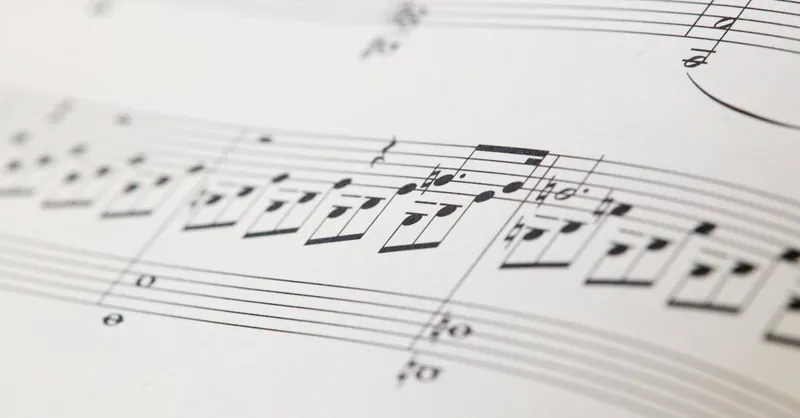
Image courtesy of César Guillotel
Applying Theory to Guitar: Fretboard Layout and Common Guitar Shapes
Translating music theory into practical guitar playing starts with understanding the guitar fretboard layout—a visual map of notes arranged across six strings and multiple frets. Unlike the piano’s linear keyboard, the guitar’s fretboard repeats notes in patterns along and across the strings, making it essential to recognize scale shapes, chord formations, and finger positioning based on theory concepts you've learned.
The Guitar Fretboard: Connecting Notes and Positions
Each guitar string is tuned to a specific open note (from lowest to highest: E, A, D, G, B, E). By fretting different frets, you move through the musical alphabet chromatically, increasing pitch by a half-step per fret. Learning where notes appear on the fretboard lets you:
- Visualize scale patterns, such as the major and minor scales, across strings and frets.
- Identify the root notes that anchor chords and scales.
- Navigate smoothly between positions, improving fluency and improvisation.
Common Scale Patterns and Their Shapes
Guitarists rely heavily on scale shapes, which are finger patterns representing scales on the fretboard. These shapes help you play scales without having to think every note's name, facilitating muscle memory and speed. The most popular scale patterns include:
- The CAGED system: Divides the fretboard into five overlapping shapes named after open chord shapes (C, A, G, E, D). This system provides a framework to play major scales, chords, and arpeggios all over the neck.
- Pentatonic scales: Used widely in rock, blues, and pop, pentatonic shapes focus on five notes per octave and are easy to master for soloing.
Chord Shapes and Finger Positioning
Chords on guitar are formed by pressing multiple strings simultaneously, creating harmony. Music theory tells us which notes form chords, but applying that to guitar requires learning common chord shapes and fingerings. Some fundamentals are:
- Open chords: Utilize open (unfretted) strings and easy finger shapes, perfect for beginners (e.g., C major, G major, D major).
- Barre chords: Use one finger to press multiple strings across a fret, enabling movable chord shapes based on theory to play any chord anywhere on the neck.
- Power chords: Two or three-note chords often used in rock music, based on root and fifth intervals.
Practical Tips for Applying Theory on Guitar
- Start by memorizing the note names on each string at key frets (open, 3rd, 5th, 7th, 12th).
- Practice scale shapes slowly, connecting each note to the theory interval or scale degree it represents.
- Use the CAGED system to see how chord shapes link together and relate to scale patterns across the fretboard.
- Experiment with building chords by locating the root, third, and fifth notes on strings to understand their shape construction.
- Integrate rhythm practice by strumming chords and playing scales in different time signatures to reinforce timing.
By mastering fretboard layout, scale patterns, and chord shapes, you bring music theory from abstract concepts into real-world guitar playing. This approach not only boosts technical skill and finger dexterity but deepens your musical understanding, enabling confident improvisation, composition, and performance.
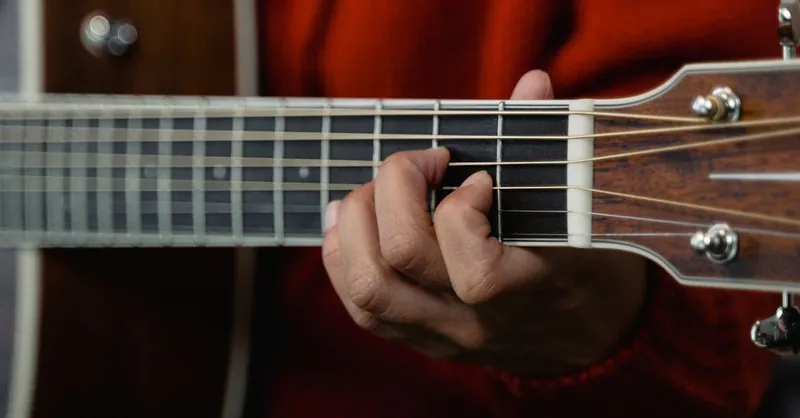
Image courtesy of Tima Miroshnichenko
Applying Theory to Piano: Keyboard Layout and Hand Positions
Understanding how music theory translates physically onto the piano keyboard is a crucial step for beginners aiming to connect theoretical concepts with practical playing. The piano’s linear layout visually represents the entire musical alphabet, making it an excellent instrument for internalizing scales, chords, and intervals.
The Geography of the Piano Keyboard
The piano keyboard consists of repeating groups of white and black keys arranged in a pattern that repeats every 12 keys (an octave). The white keys correspond to the natural notes (A, B, C, D, E, F, G), while the black keys represent the sharps (#) and flats (b) — the notes between the naturals.
- Each octave starts at C, identifiable as the white key immediately to the left of a group of two black keys.
- The black keys are grouped in twos and threes, helping visually and tactically orient your hand.
- Knowing this layout lets you easily find the root notes of scales and chords to build from.
Finger Numbering and Optimal Hand Positions
Standard piano technique uses a finger numbering system to guide proper hand placement and movement:
| Finger Number | Digit Name |
|---|---|
| 1 | Thumb |
| 2 | Index finger |
| 3 | Middle finger |
| 4 | Ring finger |
| 5 | Pinky |
Keeping your hand relaxed with curved fingers and placing your thumb on a white key (often starting with middle C for beginners) provides a foundation for smooth scale and chord execution.
Physically Translating Scales and Chords on the Keyboard
When applying theory such as major and minor scales or chord shapes to the piano:
- Scales:
- Start with your thumb (finger 1) on the root note, like middle C for C major.
- Follow the scale’s interval pattern by moving your fingers sequentially across the keys, using finger crossings (e.g., thumb tucking under) to maintain fluidity as you ascend or descend.
-
Practicing scale fingerings ingrains the sound and physical shape of scales, reinforcing theoretical knowledge.
-
Chords:
- Place your fingers on the root, third, and fifth notes based on the chord formula you’ve learned. For example, a C major chord is C (thumb), E (middle finger), and G (pinky).
- Learn comfortable fingerings that allow you to play common chord variations smoothly, including sevenths and inversions.
- Using chord inversions spreads the notes out to fit your hand comfortably while maintaining the harmonic function.
By internalizing the keyboard layout and mastering efficient hand positions and fingerings, you transform abstract music theory into tactile knowledge. This connection accelerates your ability to play scales, build chords, and improvise melodies on the piano confidently, making your learning experience both practical and musically enriching. Whether you’re transitioning from guitar or starting fresh, visualizing and feeling music theory on the keyboard provides a strong foundation for any beginner pianist.

Image courtesy of RDNE Stock project
Ear Training and Developing Musical Awareness: Recognizing Intervals, Chords, and Progressions
A crucial yet often overlooked part of learning music theory for guitar and piano is ear training—the practice of developing your ability to identify musical elements by ear. Strengthening your musical awareness through simple ear training exercises will dramatically enhance your playing, improvisation, and overall musicianship. When you can recognize intervals, chords, and chord progressions by sound, you become more intuitive and confident at the instrument, able to learn songs faster and improvise creatively.
Simple Ear Training Exercises for Beginners
Start with these fundamental exercises tailored for guitarists and pianists eager to sharpen their ears:
- Interval Recognition Practice
- Play two notes consecutively or simultaneously (on piano keys or guitar frets).
- Listen carefully and try to identify the interval by name (e.g., minor third, perfect fifth).
- Use familiar reference songs to help associate the sound of each interval (like “Twinkle Twinkle Little Star” for perfect fifth).
-
Gradually increase difficulty by mixing intervals and practicing both ascending and descending patterns.
-
Chord Quality Identification
- Play or listen to basic chords (major, minor, diminished, augmented).
- Focus on the emotional quality the chord conveys—happy (major), sad (minor), tense (diminished), or bright (augmented).
- Try to replicate the sound by ear on your instrument without looking at chord charts.
-
Progress to seventh chords to distinguish familiar jazz or blues tones.
-
Recognizing Common Chord Progressions
- Listen to simple progressions like I-IV-V or I-vi-IV-V in different keys.
- Hum or sing along to internalize the harmonic movement.
- Practice playing these progressions by ear on guitar or piano, aiming to identify chord changes without sheet music.
- Experiment with improvisation or composing short phrases over these progressions.
Why Developing Musical Awareness Matters
By cultivating your ear, you bridge the gap between theoretical knowledge and real-world playing. You’ll find it easier to:
- Transcribe songs by ear, speeding up the learning process.
- Improvise solos and melodies that fit harmonically with the background chords.
- Compose more intuitively, understanding how note choices affect the mood and texture.
- Communicate with other musicians using a shared understanding of intervals and harmonic functions.
Incorporate ear training into your daily practice routine for just a few minutes, and you’ll soon notice your ability to hear and replicate musical ideas improves dramatically. This skill pairs perfectly with your growing knowledge of scales, chords, and rhythm, making your guitar and piano journey more natural, creative, and fulfilling.
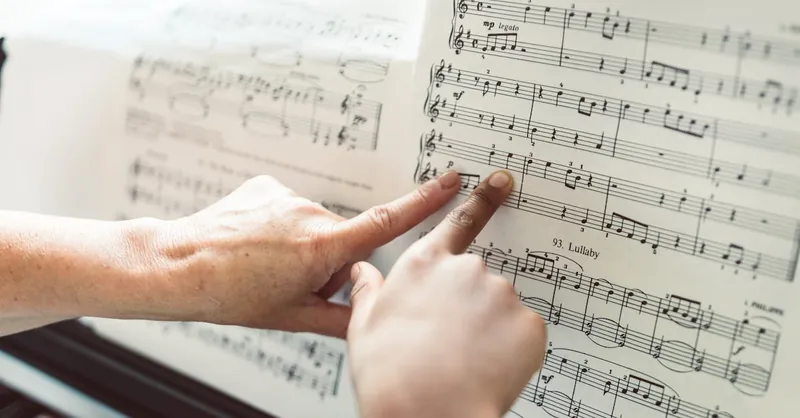
Image courtesy of RDNE Stock project
